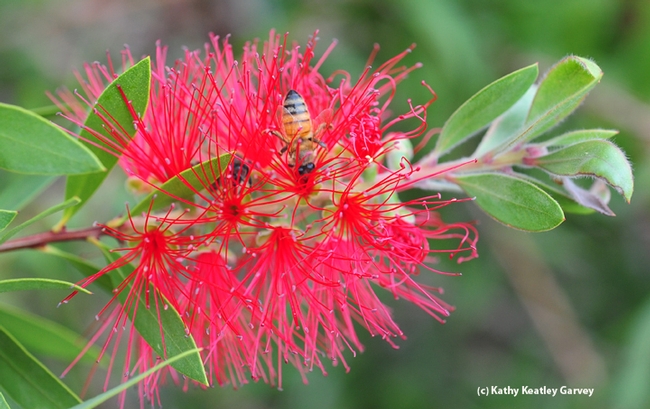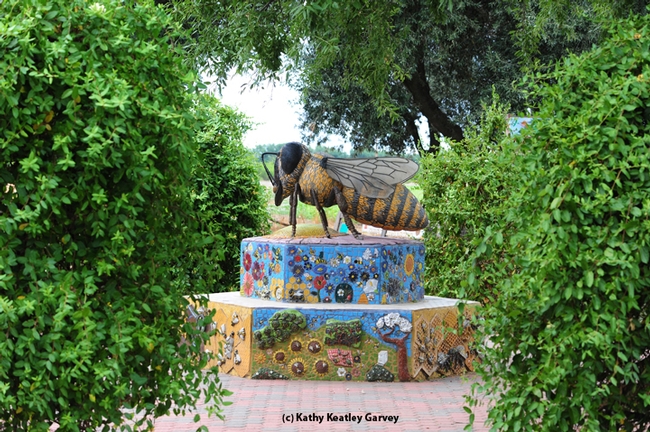If you plant a bottlebrush in your yard, you'll experience a brush with kindness.
This time of year there's not much food for honey bees to eat. Bottlebrush, in the genus Callistemon and family Myrtaceae, fits the bill.
We captured this image Oct. 16 at the Häagen-Dazs Bee Haven, a bee friendly garden on Bee Biology Road, University of California, Davis, west of the central campus. The half-acre garden, planted in the fall of 2009, serves as a year-around food source for the bees at the nearby Harry H. Laidlaw Jr. Honey Bee Research Faciity, as well as other pollinators, raises public awareness of bees, and provides visitors with ideas of what to plant in their own gardens. Admission to the garden, open from dawn to dusk, is free. If you want a guided tour (a nominal fee is charged), contact Christine Casey at cacasey@ucdavis.edu.
The bee-utiful Miss Bee Haven, a six-foot long ceramic mosaic sculpture by Donna Billick of Davis, anchors the garden. The UC Davis Art/Science Fusion Program, directed by Donna Billick and entomologist/artist Diane Ullman, has kindly provided a plethora of art, the work of their students in Entomology 1. Think decorated bee boxes at the entrance, a native bee mural on the tool shed, ceramic mosaic planters filled with flowers, and native bee condos for leafcutter bees and blue orchard bees.
The bottlebrush fits in well. Native to Australia, this plant resembles--you guessed it--a bottlebrush, the kind of tool you'd use to clean a baby bottle or an insulated bottle. Most flower heads are red, but they can also be yellow, orange, white or green, depending on the 34 species.
The bottlebrush is a long and late bloomer, to be sure. But a welcome one at that.
Attached Images:

